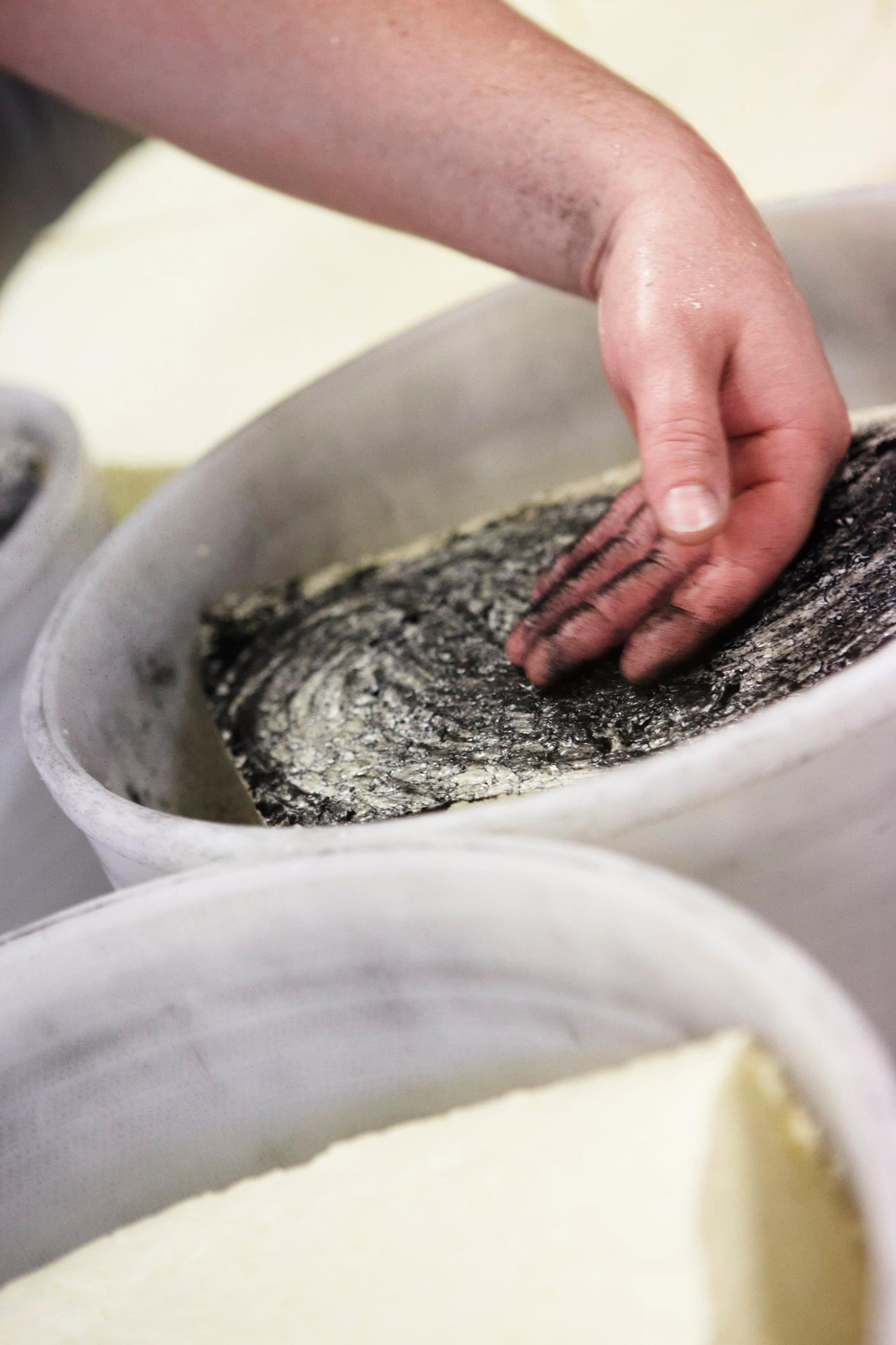The unique artisan line
Controlledmanufacture
Morbier concentrates the talent and expertise of all those involved in the sector: farmers, cheese makers and affineurs. Since obtaining the PDO, Morbier production has been growing steadily.
Production, which stood at 3,065 tons in 2000, has now reached 12,000 tonnes.
All the stages in the production process must be carried out within the appellation area and comply with the rules listed in the PDO specifications. The farms and cheese dairies are monitored internally by the Morbier group and externally by a Bureau Veritas certification body.
Morbier wheels are taken from cheese dairies and rated for appearance and flavour by an expert tasting jury. These sessions, called the organoleptic examination committee, ensure that the cheeses correspond to the Morbier PDO requirements.
The different stages
of Morbier AOP production
1 | Milking
Montbéliarde and Simmental cows are milked twice a day every day during their lactation period. On average, a Montbéliarde gives 20 litres of milk per day.
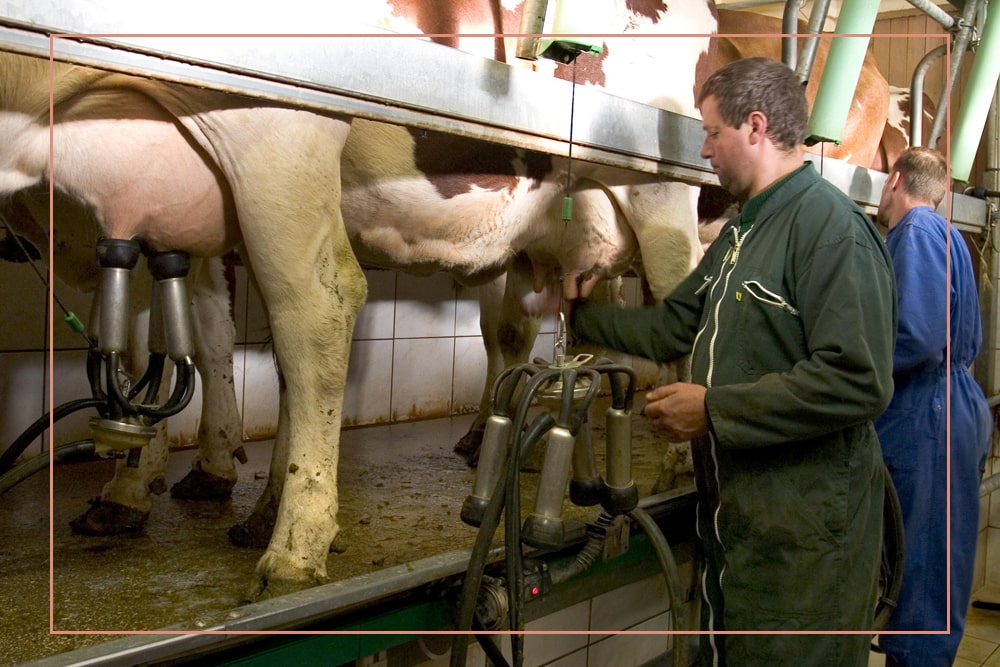
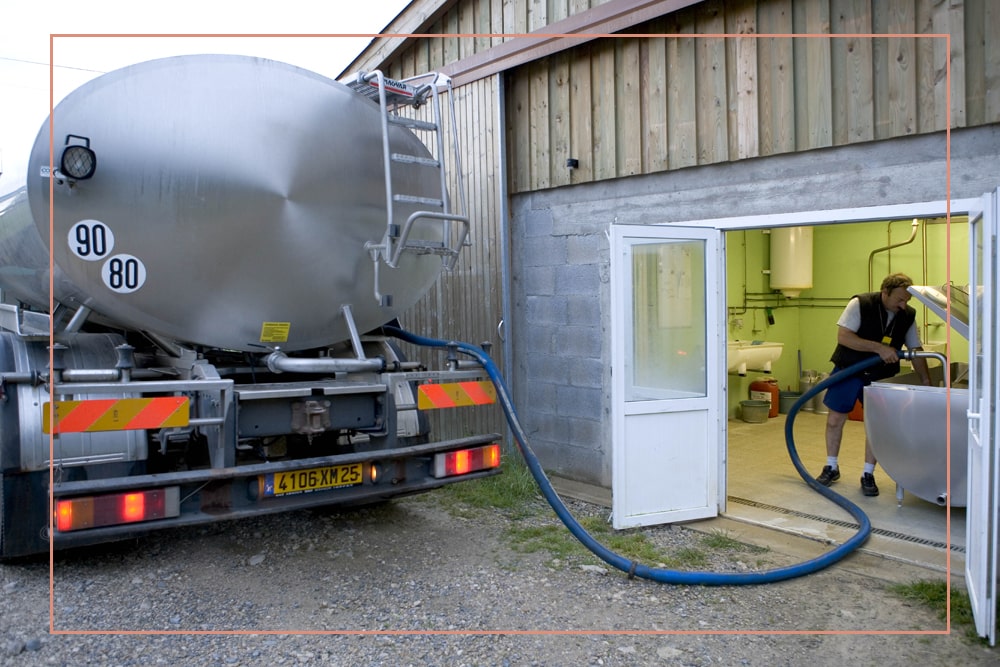
2 | Collection
The milk is collected from the farms and transported to the cheese dairy daily. The cold chain is respected and, before each use, the equipment (tank and pipes) is rinsed and cleaned.
3 | The vat
After the collection, the milk is placed in a stainless steel or copper vat and lactic ferment is added to make it acidic.
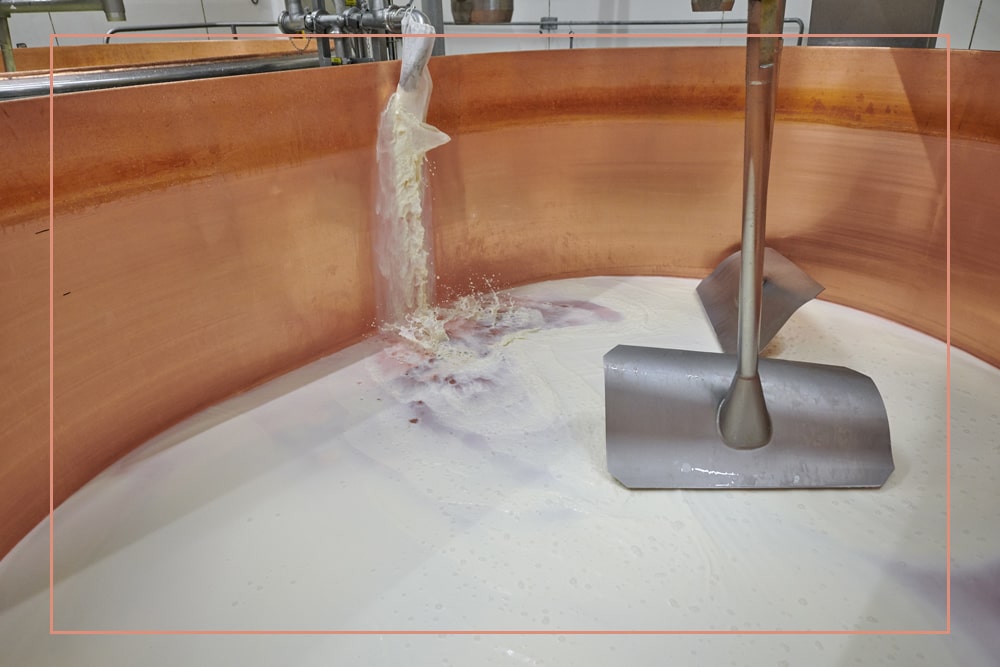
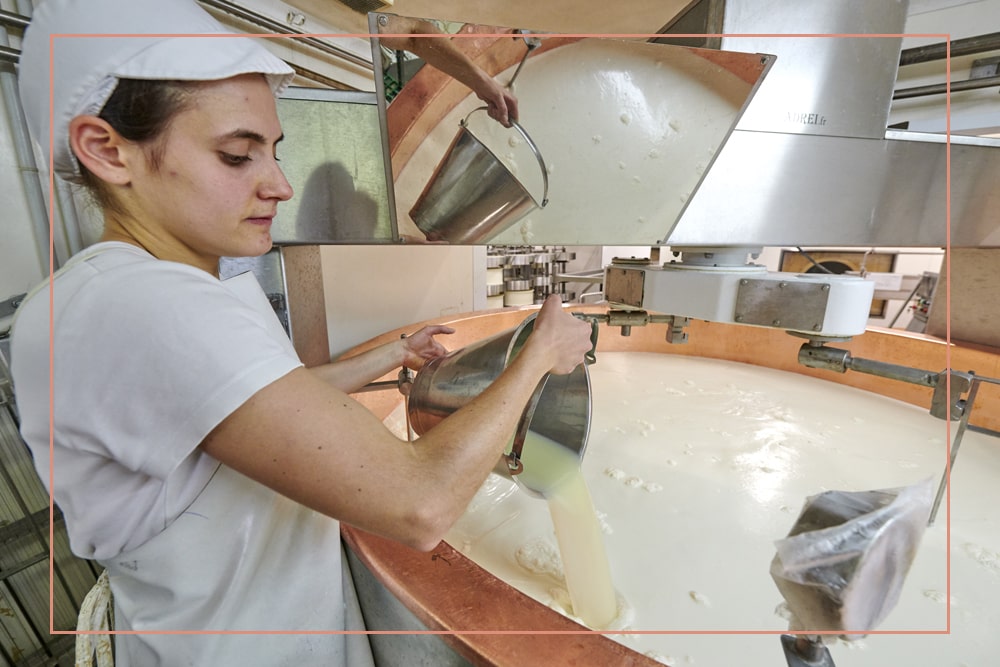
4 | Renneting
The milk is gradually warmed up to a maximum of 104°F (40°C) and then rennet is added to make it curdle. This results in 2 products: a solid - the curd and a liquid - the serum or whey.
5 | Decurdling
The curd is cut into pieces the size of a cherry and stirred to help it drain. The cheese maker assesses the texture and size of the pieces manually.
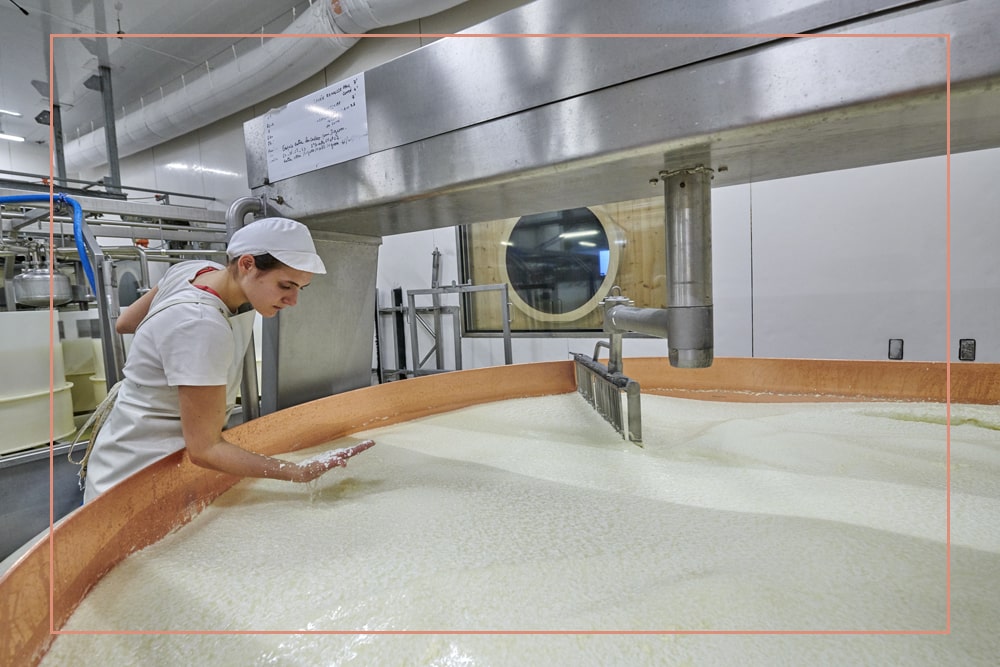
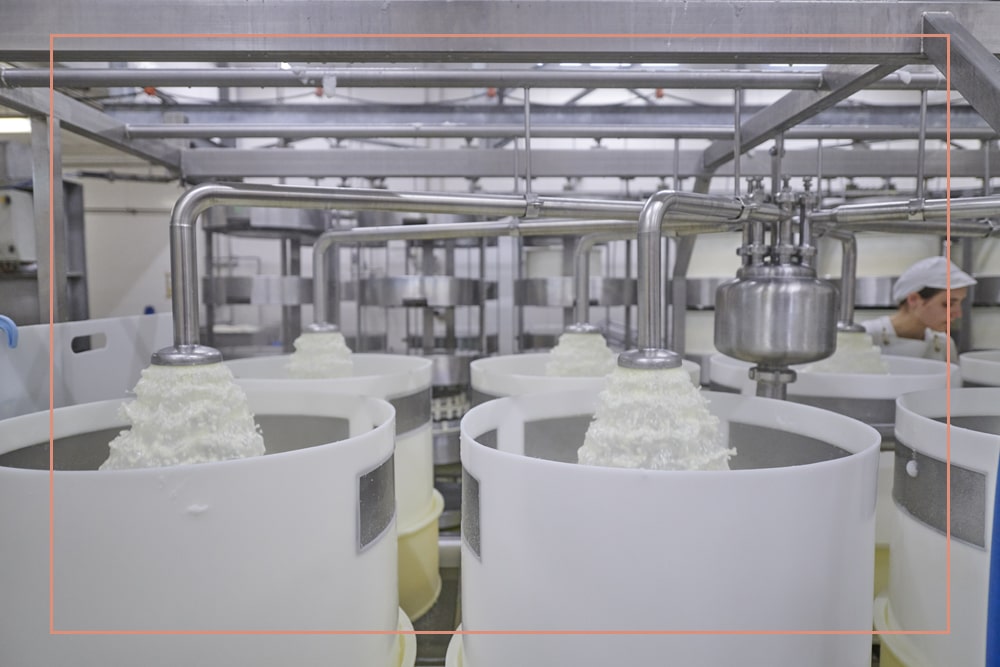
6 | Pre-pressing
In order to obtain the smooth and fine texture of Morbier, the cheese maker replaces part of the whey in the vat with water (salted or natural), removing the lactose. Then the curd-whey mixture from the vat is transferred to the pre-pressing moulds.
7 | The addition of vegetable charcoal
After pre-pressing the pieces of curd are placed in moulds and are cut into two halves. This is when the charcoal is placed on one of the halves.
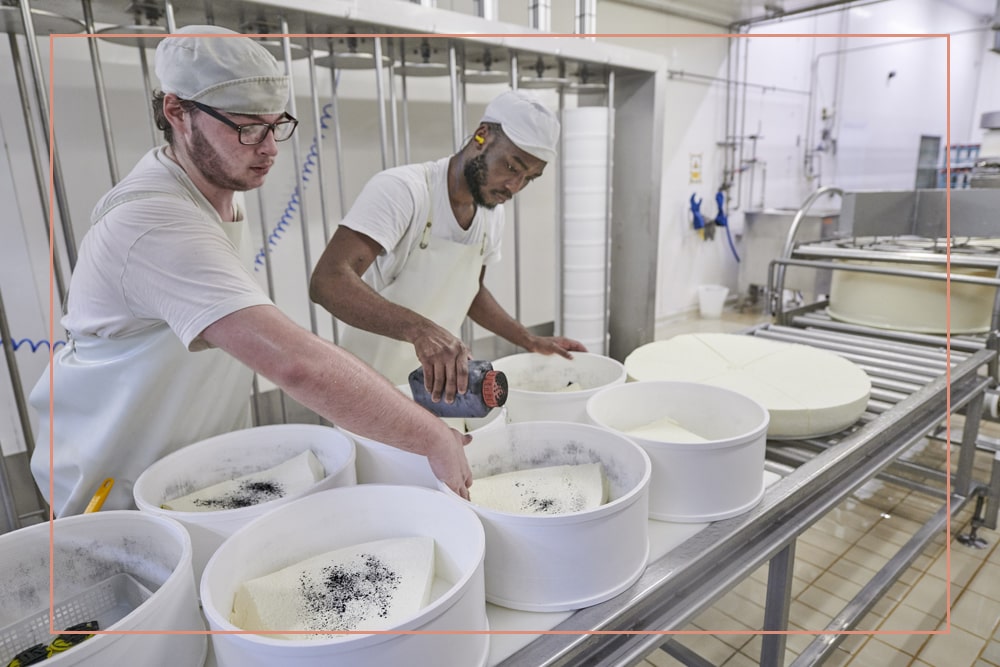
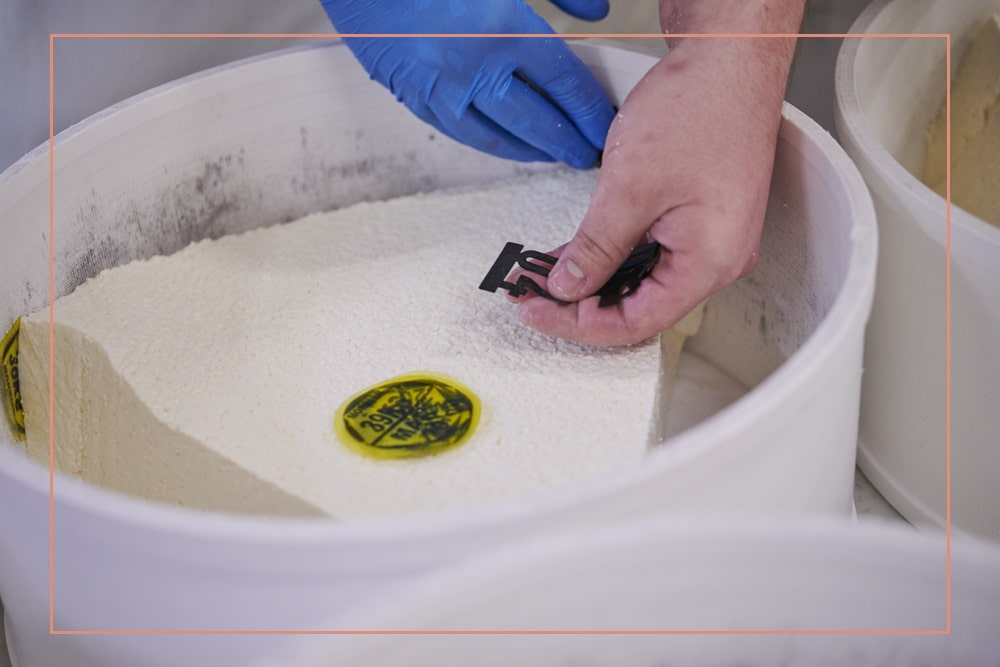
8 | The cheesemark
The cheese maker places the regulatory cheesemark on each cheese indicating the number of the dairy, the name Morbier, and the month and year of manufacture.
9 | The press
The cheeses are put in a press for a few hours then unmoulded.
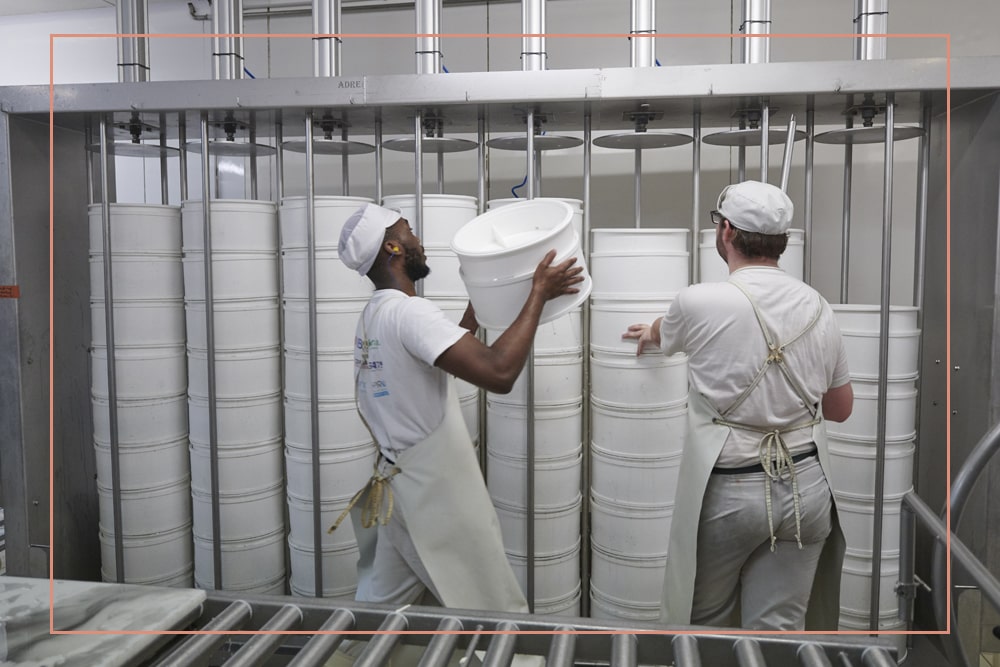
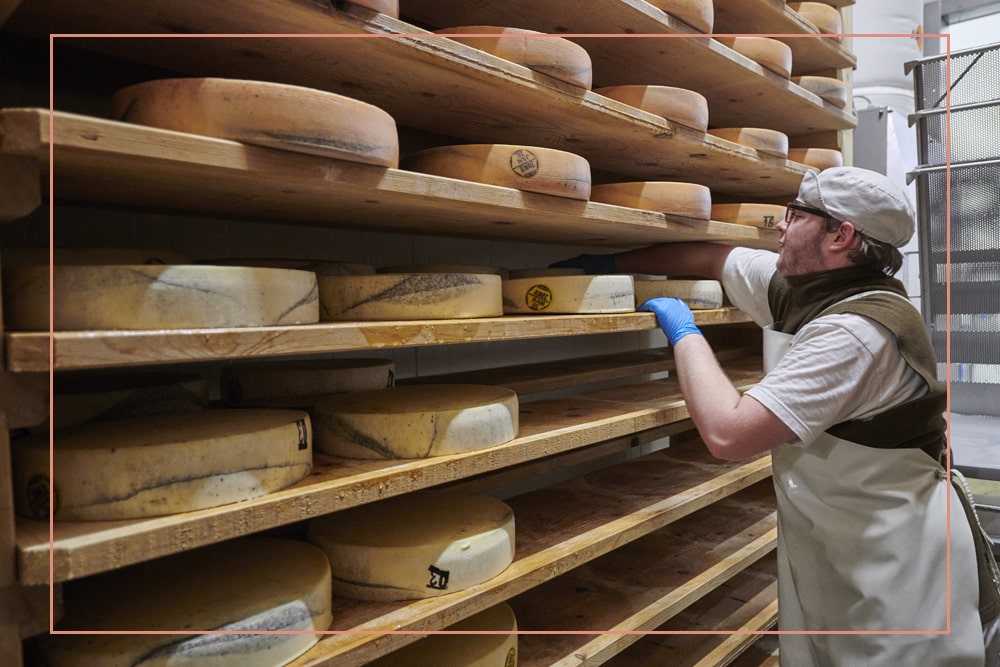
10 | Maturing
Morbier matures in a cellar for a minimum period of 45 days at a temperature of between 47- and 55-degrees Fahrenheit (between 7 to 15°C). The rind is obtained exclusively by rubbing with salt water and/or by brining (soaking in salt water).

